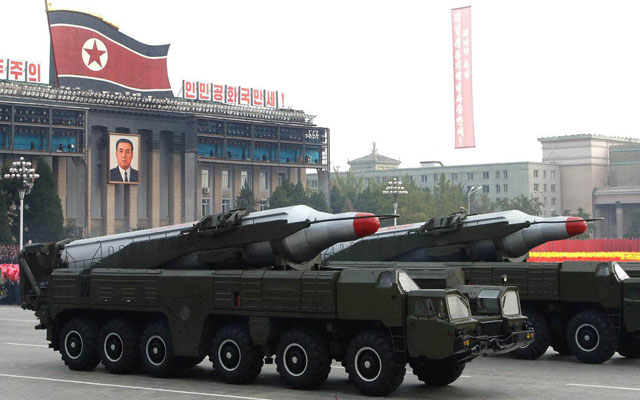Yesterday, White House spokesman Jay Carney asserted that the U.S. is “fully capable of defending itself” against a North Korean ballistic missile attack. Carney didn’t mention that the Obama Administration has tried to undermine the long-range missile defense program since it came into office.
First, it decided to decrease the number of Ground-Based Midcourse Defense (GMD) interceptors—which are capable of shooting down North Korean (and other) long-range missiles—to just 30. The Bush Administration deployed the first interceptor in 2004 and planned on deploying a total of 54 interceptors. The Obama Administration reversed that decision based on “new intelligence” purporting to show that the ballistic missile threat is not advancing as quickly as previously thought.
The Obama Administration pursued a missile defense program that is overwhelmingly biased against protection of the U.S. homeland. According to President Obama’s missile defense budget submission from last year, the Administration is planning on spending more than three times as much on regional missile defense as on defending the homeland between fiscal years 2012 and 2017.
The U.S. should develop a comprehensive layered missile defense system capable of addressing global ballistic missile threats. While North Korea in only the most recent example of its demonstration, Iran continues to advance its ballistic missile and nuclear weapons program.
The current systems provide a starting basis for such advancements. In particular, the Administration should enable early models of the Standard Missile-3 (SM-3) interceptors to counter long-range ballistic missiles in the late midcourse stage of flight. This requires improved command-and-control features and interceptors tied to a forward-deployed radar.
The Administration should also advance and improve tracking capabilities of the current radar and satellite constellations. To achieve the best results, the sensors and radars should be located in space and on the ground. A distributed system should permit the delegation of launch authority to lower levels within the military hierarchy to achieve the best intercept probabilities within the short time frame that decision makers have after a missile is launched. A long-range ballistic missile such as the one North Korea is developing, can reach anywhere in the world in 33 minutes.
The Administration could direct approval of an acquisition plan for space-based missile defense interceptors based on the acquisition plan approved for Brilliant Pebbles interceptors in 1990. Space-based interceptors would provide the best protection against most classes of ballistic missiles. Sadly, the Obama Administration has done nothing to advance space-based interceptors.





























